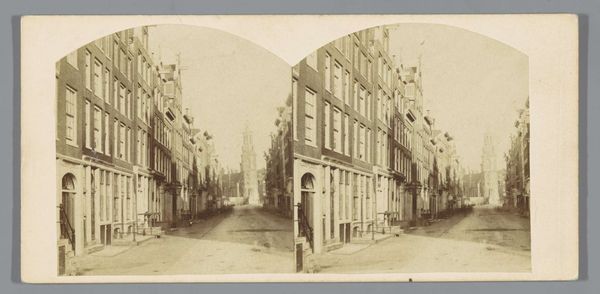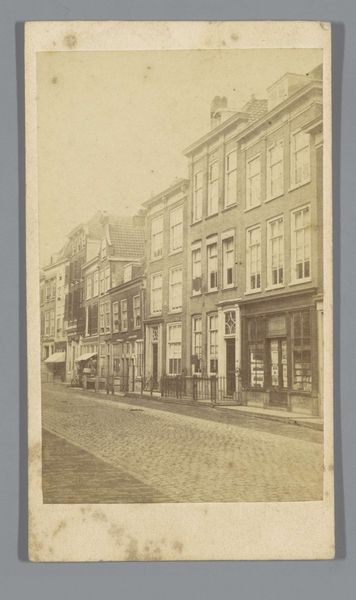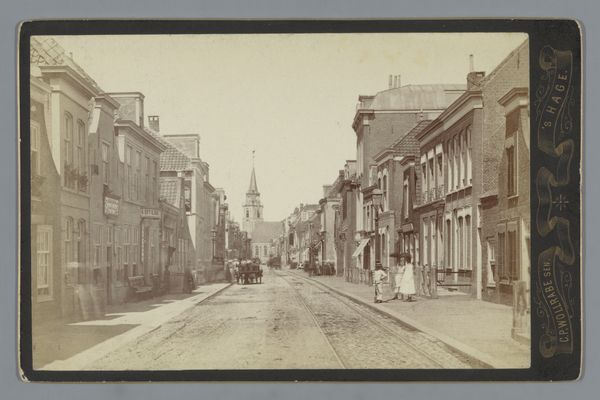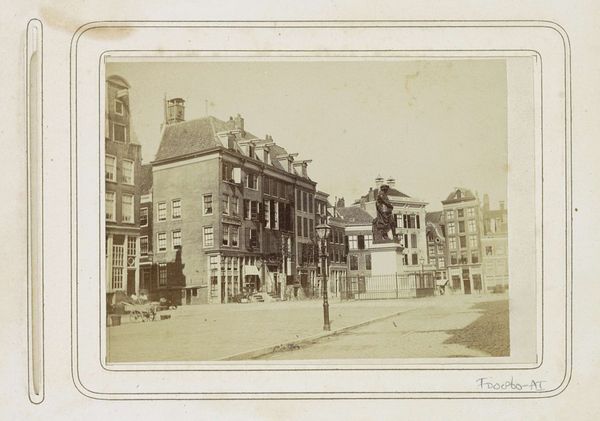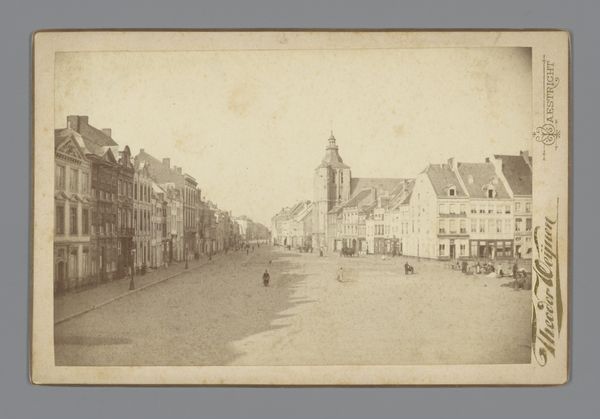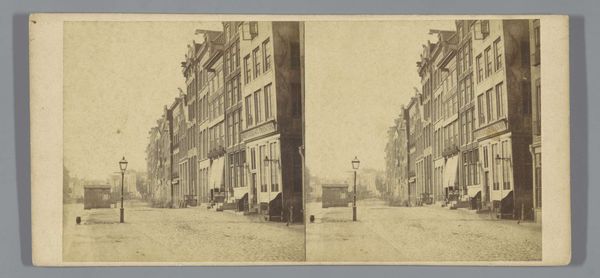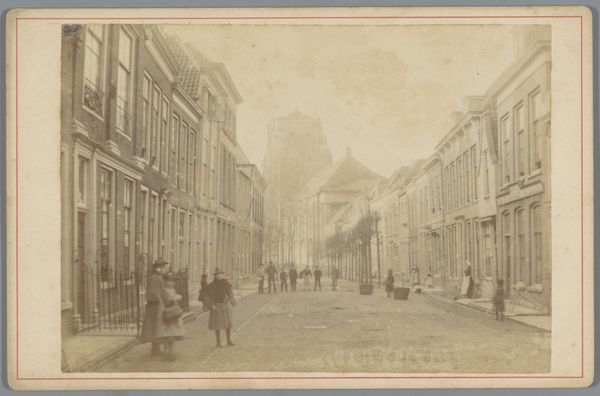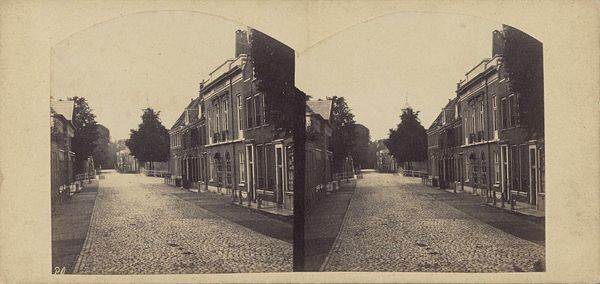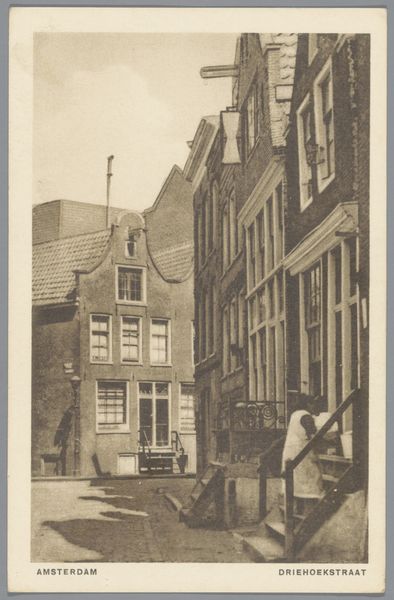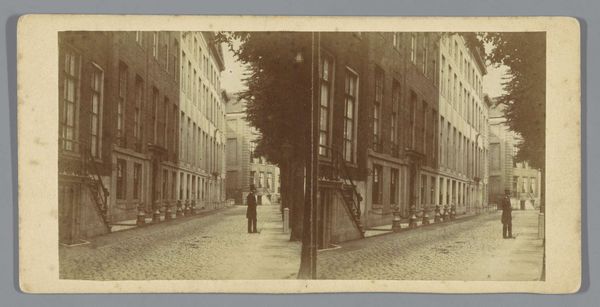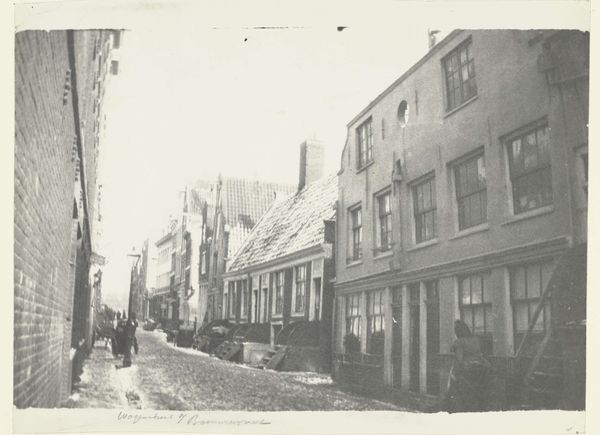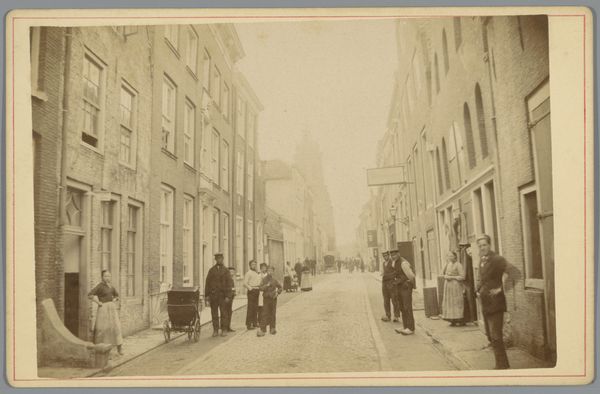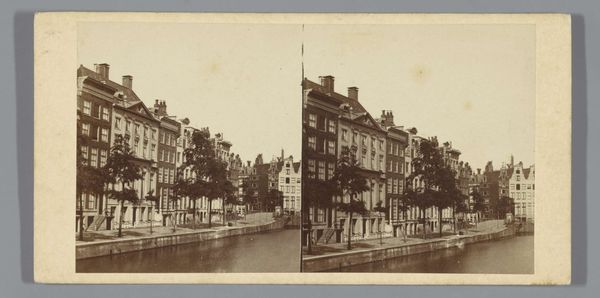
Smedestraat in Haarlem, gezien richting de Sint-Bavokerk 1859 - 1865
0:00
0:00
photography, gelatin-silver-print
#
dutch-golden-age
#
landscape
#
street-photography
#
photography
#
gelatin-silver-print
#
street
#
realism
Dimensions: height 85 mm, width 174 mm
Copyright: Rijks Museum: Open Domain
Curator: Pieter Oosterhuis captured this image, "Smedestraat in Haarlem, gezien richting de Sint-Bavokerk," sometime between 1859 and 1865. It's a gelatin-silver print currently housed at the Rijksmuseum. Editor: There's something strikingly serene about it. The muted tones and linear perspective draw you right into that cobblestone street towards the imposing church. It almost feels staged, perfectly still, despite presumably being a real street scene. Curator: Precisely, the "realism" aspect is what's striking. Consider the burgeoning photographic techniques of the period, and how photographers grappled with capturing an accurate depiction of modern life—with all its attendant social dynamics and labour relations on public view. Here we have commerce in action, with goods presumably being transported for trade. Editor: And there’s that stillness you mentioned which, from a critical theory lens, gives one pause. Who had access to capturing these "realistic" depictions of Haarlem in this era? I'm interested in whose narrative is being prioritized by omitting certain individuals. The quietude might erase the everyday bustle and lived experiences of women or labourers or other disenfranchised inhabitants, and in effect silence their histories. Curator: That's an insightful reading, although Oosterhuis was also likely working within the technological limitations of his medium and the exposure times necessary. Consider the very material conditions necessary to producing this kind of documentation, like the costs associated with photographic paper, processing, equipment upkeep…these limited both availability and access. Editor: Granted, that’s crucial! To bring it into sharper focus, what could a close examination of Oosterhuis’ commission history uncover regarding class biases or agendas subtly embedded within apparently innocuous photographs? I wonder also, what kind of darkroom labour was involved in the processing stage, who was exploited in this context, and what occupational hazards were they subjected to? Curator: Yes, that points to the unsung labour in art's production—a vital piece of the puzzle. Editor: Absolutely, bringing these voices and perspectives into how we engage visually offers an entirely refreshed understanding of not only the historical, but also the socioeconomic complexities and inequities subtly captured here. Curator: Well, it has certainly opened my eyes even more to the multitude of narratives embedded, or omitted, within even the most serene of street scenes. Editor: Precisely, it encourages ongoing engagement as an active critical practice—essential for every curator.
Comments
No comments
Be the first to comment and join the conversation on the ultimate creative platform.
